
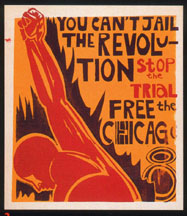
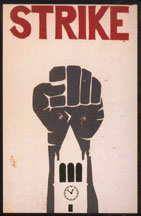
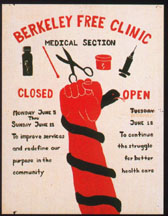
 |
 |
 |
 |
|---|
Up Against the Wallby Michael RossmanIn tribute to the political poster renaissance of my native land, and those who carry it on. I remember how the renaissance of the political poster in my land began. The early New Left had been nearly barren of art; in Berkeley we went through the 1964 Free Speech Movement without a single graphic poster. Suddenly the next spring, as the anti-war movement and the rock- dance/hippie scene sprouted together, posters appeared to announce them, proclaiming a renaissance of political art. The impulse spread quickly in the participatory clime, encouraged by new access to cheap offset printing and the revival of silkscreening, and propelled by needs to communicate in low-income communities with little access to major media. Some of our needs were dramatic -- responding to the war, campus struggles, police mayhem. Others were quieter and novel. The boundaries of traditional politics had shattered to admit new concerns of peoples of color, women, homosexuals, the handicapped, the whales and redwoods. As waste disposal, psychedelic exploration and energy technology became politicized, each branch of our ramifying activism developed symbols to illustrate its concerns, using posters as much for this as to organize activities. The functions of the political poster evolved as it came to be used and then designed for interior display, politicizing the private surround, eroding the distinction between political and fine arts. |
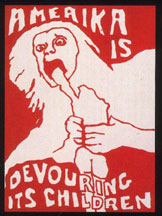 |
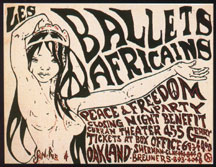 |
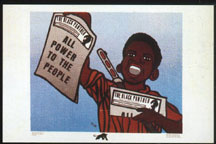 |
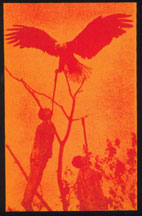 |
|---|
|
Since 1965, the poster renaissance has produced some 200,000 designs. They form a collective work of social art with few precedents, exuberant in its democracy. In the great chapters of political poster history -- Russian, Spanish, Cuban, Chinese, World War-patriotic -- art served a State, with State support. In ours, posters rise from the people to map their pressures on the State, the textures of political culture, more diversely and enduringly than in other chapters opened by modern ferments in Europe and Asia. They issue from a nation of radical diversity, with no central organs of popular action, in an era of mutant concern -- rising in graphic sweat from each surface of our engagement, to evaporate in history's breeze. Condensed as dew, what a substance! With a handful of posters from any cause one can decorate a meeting or an article; with 500 one can begin to disclose its deep stories, encoded in their charged conjunctions of image and text. But hardly anyone has had the chance, not just because they're so hard to gather. Much of this work is still anonymous, and invisible, for our domestic Left has a blind eye to the role of art in social metabolism and treats its artists shabbily. To political historians the posters weren't print and to art historians they weren't art; they just slipped down the catagorical crack. The few specialists who gathered some causes' works could hardly grasp the whole. But how could anyone grasp it? I had no idea in 1977. I was just surprised to find that the 200 posters gathering dust since my campus travels ended might be the most significant collection in the Bay Area. Thought I'd call up my old Movement buddies, put a proper batch together in a public place; figured it might take three months. No one had saved enough to matter. Wondering why no institution had either, I set about tracking more down by twos and fives in yardsales, behind files in activist offices, engaging a slow, picaresque adventure. |
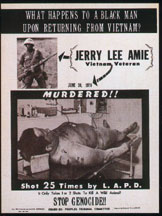 |
 |
 |
 |
|---|
|
By the 1,500 mark I began to grasp the nature of what I was saving, how it could be so obvious everywhere yet invisible in the whole. For the posters flow by in every stream as fleeting cues, peripheral save for their resonance in the heart. Even at an activist crossroads, you see only what flows in a few of the streams, the little that passes your local perch. As you grow older you cross fewer streams, remember vivid images, and may think poster activism has faded. But its diverse renaissance continues, extending a rich history. Just as the counterculture fertilized the New Left, the poster renaissance took independent root in the emerging farmworkers' movement, where Luis Valdez's workshop made serigraphy an agency of La Raza consciousness. By 1967, when the Black Panthers organized, posters were essential for urban outreach, and new distribution systems were developing to spread their dramatic images across the land. As campus struggles over affirmative action grew intense, small poster workshops formed to support them, and moved on into the community. Such beginnings prepared the explosion of posters that followed the Cambodian bombing and Kent State killings in May 1970, as public workshops flourished on dozens of campuses. Their outpouring left wide awareness of "poster power," and marked the transition of the renaissance from a spontanous tendency into a somewhat systematic movement of social art. Soon the Chicago Women's Graphics Collective was producing the work that illuminated women's centers for a decade, as Akwesasne Notes did for the Native American movement. Though important workshops developed in Boston, Portland, L.A., N.Y. and elsewhere, the movement's richest evolution has been in the San Francisco Bay Area. |
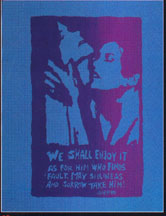 |
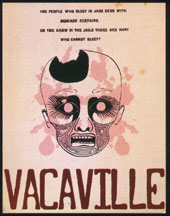 |
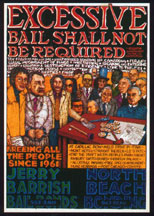 |
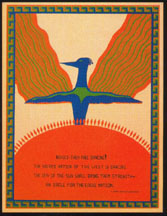 |
|---|
|
Here the first silkscreen workshop dedicated to community service organized in 1971. La Raza Graphics was soon joined by two workshops in the Asian-American community, and a series led in the East Bay by Malaquias Montoya. Nursing pittances of funding, they grew competent as production shops, producing thousands of designs, teaching thousands the elements of poster-making, grounding the art in local culture. When they faded, a new generation of artists nurtured in them was prepared to seed a second wave of workshops around the Bay. As these emerged in the late 1970s, the San Francisco Poster Brigade's exhibits worked to unify the poster-making community. This evolution has continued for twenty years, through a history involving 40 workshops, many noteable artists, and all the era's issues. Bay Area poster-making is now knit together by a tradition of cooperation and mutual support among artists and printers of many races, ethnicities, genders, preferences and political persuasions, expressing the democracy their effort supports. It has generated a vast body of work, remarkable in variety and craft, that stands at the heart of the domestic renaissance and will in time be celebrated as a modest triumph of social art. Meanwhile it remains almost invisible even in its locale, just as the broader renaissance remains uncelebrated. The small bouquet of designs I offer here is plucked from the heart of this work, too keyed to its history to more than suggest how it goes on. |
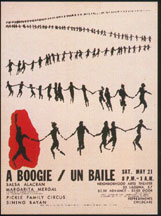 |
 |
 |
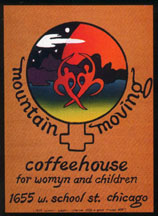 |
|---|
|
The 8,000 posters now in the archive I tend are a scanty sample, just enough to suggest the rich depths of a national treasure and to support work with other scholars. In L.A., Carol Wells has amassed a nearly comparable collection at the Center for the Study of Political Graphics, and has done wonderful work in circulating exhibitions. No other archive I've located holds even half this many; they just evaporate. Any work sent c/o MOTHER JONES will be gratefully put to use, with all duplicates going to Carol Wells' CSPG. The Poster GalleryRead about these posters, see them in larger size.[Reprinted from Mother Jones, July 1993. By late 2007, the All Of Us Or None Archive had gathered 24,000 designs -- still only a modest sampling of this vast, collective production.] |
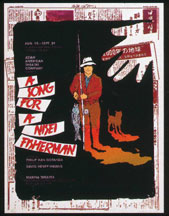 |
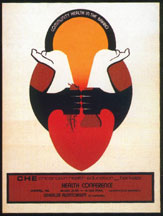 |
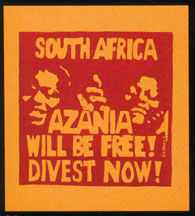 |
 |
|---|